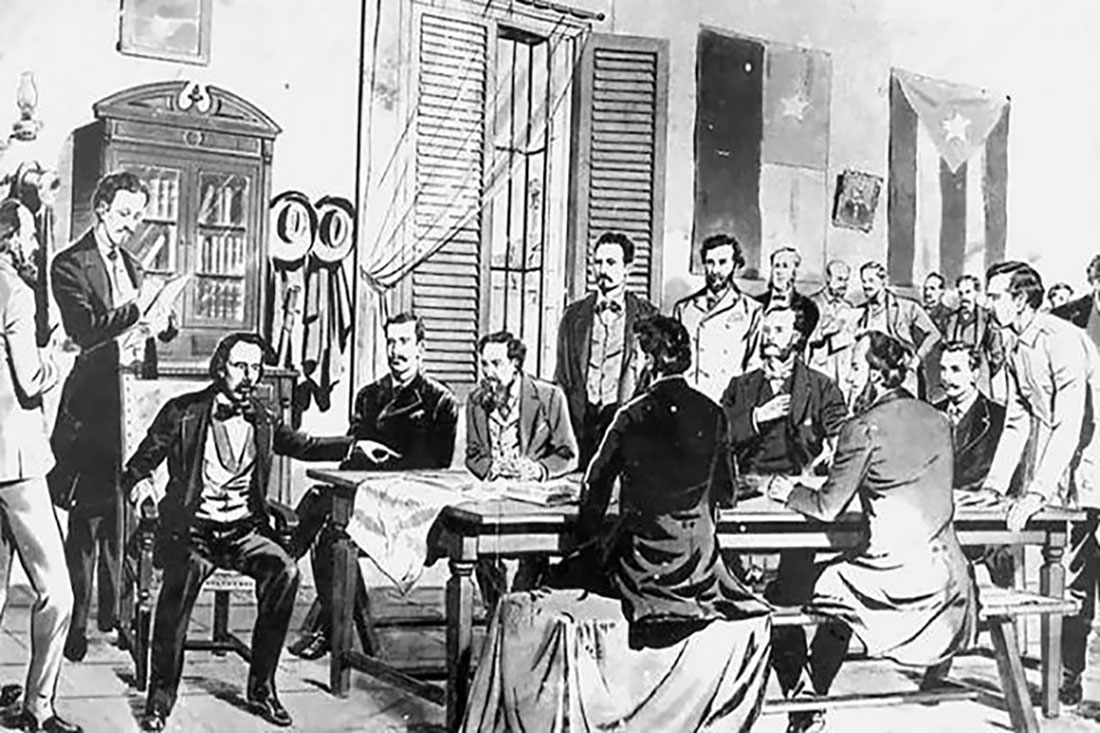Of the 24 delegates to the Constituent Assembly, only Salvador Cisneros Betancourt had participated in the Constitution of Jimaguayú. The delegates of the various army corps were mostly professionals, lawyers and doctors. This profile modulated the text. “It is the first Constitution structured as a Fundamental Law should be established. All of the above have a circumstantial component, but La Yaya will respond to the classic model of a Constitution. ” Eduardo Torres-Cuevas (2021).
First sessions
The first deliberations took place in Aguará, Camagüey. As of October 5th, it met in El potrero de La Yaya, in the same province. The Magna Carta is structured in five titles, 48 articles, and was approved and proclaimed on October 30th, 1897.
Who have been Cubans since the Constitution?
Article 2 refers:
They are Cuban:
- People born in Cuban territory.
- The children of a Cuban father or mother, even if they are born abroad;
- People who are at the direct service of the Revolution, regardless of their nationality of origin.
Article 3.- All Cubans are obliged to serve the country with their people and property, in accordance with the laws and depending on to their abilities.
As can be seen, in terms of duties, service to the Homeland was an embodied, manifest obligation. Likewise military service.
Regarding rights
It is the first constitutional text that stipulates the rights of: the inviolability of domicile, postal freedom, religious freedom, and worship “as long as they do not oppose public morals”, equality before the tax, freedom of education, the right of petition, universal suffrage, freedom of speech, the right of assembly, and that of association.
Military responsibilities
Certain modifications in the text are noted, taking into account the previous Magna Carta.
The structure created in Jimaguayú, the Government Council, is ratified, but the figure of the General in Chief is questioned and the maximum responsibilities fall on the Secretary of War who will be the hierarchical superior of the Liberation Army. In this sense, the Governing Council assumes the appointment of the official position of colonel downwards, thus declaring demarcations of powers.
1898. An unregulated peace
The intellectual Eduardo Torres-Cuevas points out: what was not foreseen by the constitutionalists happened. The Constitution understands that peace was only foreseen on the platform of independence:
Article 40.– If the Government, in accordance with Section 15 of the same Article 22, agrees to make peace with Spain, the Assembly should be the one that would ratify the treaty. This Assembly will temporarily provide for the regime and government of the Republic until the definitive Constituent Assembly meets.
Article 41.– If Spain, without prior agreement with the Governing Council, evacuates the entire territory, an Assembly will be celebrated that will have the same powers specified in the second Paragraph of the previous Article. In this case, it will be understood when the Cuban Armies permanently occupy the entire territory of the Island, although the enemy retains some fortresses in their power.
Stolen sovereignty
As a result of the war that began in ´95, the United States declared war on Spain on April 18th, 1898. After a brief period of struggles, Madrid signed a peace treaty with the United States. On December 10th, 1898, The Treaty of Paris was signed. Thus, stealing our sovereignty the US government.
On January 1st, 1899, Spanish sovereignty ceased and North American sovereignty began. The Government of the Republic in Arms was unknown by both parties.
A culture of resistance as the patron of the Cuban nation
The Cuban independentists according to articles 40 and 41 agreed to carry out elections among the members of the Liberation Army for a Constituent Assembly.
On October 24th, 1898, 44 elected representatives met in the town of Santa Cruz del Sur, Camagüey. Then the Assembly moved to Marianao, in the province of Havana, later they relocated to Calzada del Cerro, city of Havana, where they concluded on April 4th, 1899.
This Assembly permeated by discussions and contradictions, equally ignored by the North American authorities, had the merit of perpetuating a pattern of resistance and colonial counter-hegemony whose foundations were anchored in the principle of continuity present in the Constitutions of Guáimaro (1869), Baraguá (1878) , Jimaguayú (1895) and Yaya (1897).
Bibliography
Moreno Gimeranez, Enrique (2021) Eduardo Torres-Cuevas: En Cuba todo proceso revolucionario tuvo su expresión constitucional (Parte I). Recuperado el 15 de octubre de 2021 en https://www.parlamentocubano.gob.cu
Torres-Cuevas, Eduardo y Suárez Suárez, Reynaldo (2018) El libro de las constituciones, Constituciones, Estatutos y Leyes constitucionales en Cuba entre 1812 y 1936. Tomo 1. Editorial, Imagen Contemporánea, Cuba, La Habana.
Translated by: Aileen Álvarez García






